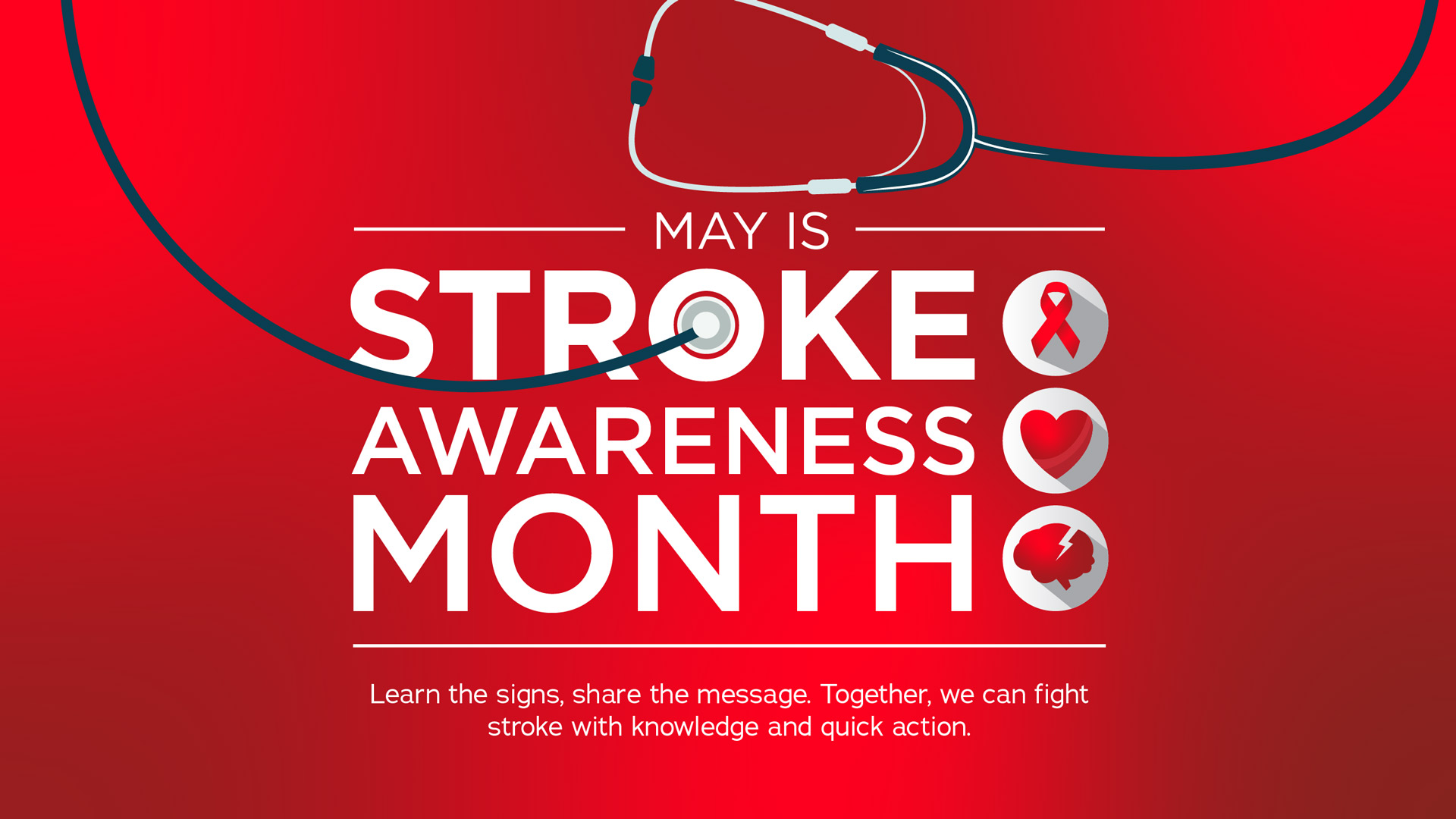
May is Stroke Awareness Month, and it’s the perfect time to learn how to recognize the signs of a stroke and what to do when every second counts.
A stroke happens when blood flow to the brain is suddenly blocked (ischemic stroke) or when a blood vessel bursts (hemorrhagic stroke). Without fast treatment, brain cells begin to die within minutes. That’s why stroke is one of the leading causes of death and long-term disability in the U.S.
What Causes Stroke?
The most common type of stroke—ischemic stroke—accounts for nearly 87% of all cases (American Stroke Association). These strokes occur when a clot or blockage cuts off blood flow to part of the brain.
Some risk factors, like age and family history, are beyond your control. But others, such as high blood pressure, smoking, diabetes, and high cholesterol, can often be managed with healthy habits and routine medical care.
How to Spot a Stroke Using F.A.S.T.
The American Heart Association uses the F.A.S.T. method to help people quickly recognize a stroke and take action:
- F – Face Drooping: One side of the face may droop or feel numb. Ask the person to smile—does the smile look uneven?
- A – Arm Weakness: One arm may feel weak or numb. Ask them to raise both arms—does one drift down?
- S – Speech Difficulty: Is speech slurred, confused, or hard to understand?
- T – Time to Call 911: If you notice any of these signs, call 911 immediately.
Even if symptoms are brief, do not wait. A stroke is always an emergency.
Watch the official F.A.S.T. video from the American Heart Association:
Additional Warning Signs of Stroke
While the F.A.S.T. signs are the most well-known, strokes can also cause:
- Sudden numbness or weakness in the face, arm, or leg—especially on one side
- Trouble seeing in one or both eyes
- Difficulty walking, dizziness, or loss of balance
- A sudden, severe headache with no known cause
If you or someone else experiences any of these symptoms, call 911 immediately.
Why You Should Call 911—Not Drive
If you think someone is having a stroke, call 911 right away. Emergency responders can begin care during transport and quickly ensure the patient reaches a stroke-ready hospital.
Prevention Starts with You
Knowing the signs of a stroke is crucial, but prevention is just as important. You can lower your risk by:
- Controlling high blood pressure
- Eating a heart-healthy diet
- Exercising regularly
- Quitting smoking
- Managing blood sugar and cholesterol
If you or a loved one has had a stroke, support groups and recovery tools are available through the American Heart Association.
Beaumont Emergency Hospital
Here for your family 24/7—even on weekends and holidays.
Sources
- American Stroke Association – Types of Stroke
- American Heart Association – Stroke Symptoms
- Centers for Disease Control and Prevention – Stroke Signs and Symptoms
